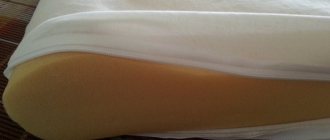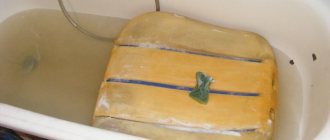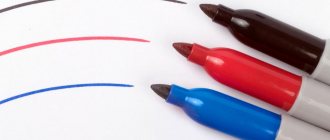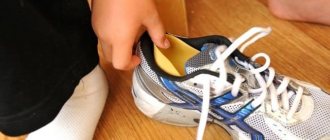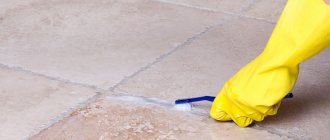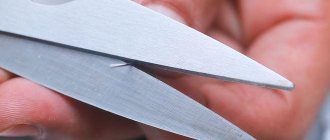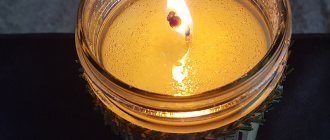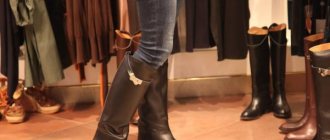Foam rubber material is used for various structures - furniture, toys, mattresses, sofas, to create decor, and insulate the house. Using the material for different purposes may lead to the need for gluing it. Any glue will not work for this purpose, so how to glue the foam rubber to get a reliable fixation? After all, foam rubber consists of only 10% foam, the rest is air, which simply absorbs most adhesive solutions. There is a special glue for foam rubber; how to choose it and how to work with it will be discussed below.
How to glue foam rubber at home
Foam rubber material is polyurethane foam, foamed in such a way that many air cells are formed. This allows the material to have high elasticity, sound insulation and thermal insulation.
It does not form mold and holds its shape at different temperatures from -40 to +90 degrees. But this material also has negative sides; it is flammable and quickly loses its technical characteristics. Although the new type of gray foam rubber, most often used for boxing gloves, lasts a long time.
There is a type of this material that is not elastic, but hard.
The characteristics of the material impose separate requirements on how foam rubber can be glued together or to other materials. The following components should not be present in the adhesive solution:
- It is impossible for the composition to contain trichloroethane and toluene, they will dilute its surface;
- The adhesive solution should not be too viscous, otherwise it will be completely saturated with the material, and there will be an increase in consumption, which can lead to deterioration of properties and long drying.
Therefore, in order to reliably glue foam rubber at home, you must first of all choose the right foam glue; suitable options will be discussed below.
Foam rubber material is polyurethane foam, foamed in such a way that many air cells are formed.
Alternative options
If you need to glue the foam rubber urgently and there is no time to buy glue, use alternative methods. For example, PVA can also glue polyurethane, although the reliability of such a design is very doubtful.
"Crystal Moment"
But Moment glue is a more suitable option for such purposes, because foam rubber is also listed among the surfaces to be bonded. In fact, the composition showed itself to be good and holds small parts tightly.
Hot melt adhesive
This method can easily be considered one of the most budget-friendly options, because the average cost of one stick is 50 rubles. It holds the foam rubber well and the only drawback can be considered only a rough and noticeable seam.
Silicone sealant
The product perfectly holds parts of foam rubber together without clogging its cellular structure. The only downside is that it takes a long time to dry.
Features of choice and types of glue for foam rubber
Choosing what to glue foam rubber with is not an easy process, because you need to take into account many factors. Only then will it be possible to obtain a strong and reliable seam that does not change its structure and properties. Therefore, you need to study the point in the instructions that describes the composition of the product; the presence of toluene and trichloroethane is unacceptable, they not only have a destructive effect on the material itself, but are also toxic substances, working in the house will be dangerous, special rules must be followed.
Choosing what to glue foam rubber with is not an easy process, because you need to take into account many factors.
General requirements for adhesive composition
In order not to make a mistake, you need to take into account a number of requirements for a high-quality solution, which will ultimately make it possible to obtain a reliable and durable fixation. These include:
- The viscosity level should not be lower than 100c, this indicator provides the necessary elasticity; with hard and hard seams, the product will deteriorate too quickly and become unusable;
- Dry residue indicator. In this case, the larger it is, the better, because the clutch will occur much faster;
- In this case, the setting speed should not be less than two minutes, because it may be necessary to shift the parts in order to obtain their correct position;
- A one-component solution, it will be easier to work with;
- High degree of heat resistance;
- Non-flammability;
- Safety for human health;
- Reasonable cost;
- Ease of application, if you use glue in balloons, the process will be much faster and easier, which is important when you do the work yourself;
- The solution should not be too viscous, this will reduce the consumption of the product and it will not completely saturate the foam rubber;
- Select a product that is suitable in shade so that there is no unsightly contrast between the product and the seam. On sale you can find different colors from white, black to red. It is possible to paint the products later to obtain a single color.
The solution should not be too viscous, this will reduce the consumption of the product and it will not completely saturate the foam.
Release forms and brands recommended by professionals
How to glue foam rubber correctly? This question is often asked by those involved in the manufacture and restoration of furniture.
Brands according to the advice of the experts:
Saba. This glue is safe and non-flammable, easy to apply and does not flow, and can be used on large surfaces. It involves using a glue gun and pressing after application.
"BF-6 foam rubber." It is used in two layers. The first is applied to the moistened surface of the base material to form a sticky film. After 10 minutes, the second layer of glue is distributed, after which the parts are connected to each other. The seams should be ironed through a damp cotton cloth.
Furniture 88 or 88-N. For gluing, you will need one layer of this adhesive, which is placed on a slightly moistened surface. Finished seams are ironed through a slightly damp cloth.
"Rapid 100". This is a quick-drying composition whose ability to set remains for 30 minutes after application. This property is what makes it valuable.
"Porolon-2". This glue meets all the necessary characteristics. It is used to glue foam rubber to plywood, wood, plastic, glass, fabric and other surfaces. It is made on a rubber base, so it is natural and safe. This glue is immediately ready for use, does not require preliminary preparation and has a high degree of ductility.
Tapicer. This is an adhesive for industrial use, but is often used in everyday life. It has proven itself in terms of quality and safety, and guarantees a long service life.
Self-adhesive foam rubber has proven itself to be excellent in automotive service, clothing and shoe making. It makes working with the material much easier and does not require fixation, since the glue is already distributed under the protective film.
Aerosol foam glue is widely available on the market. When purchasing, you need to pay attention to the integrity of the cylinder and the list of materials intended for gluing.
Working with foam rubber is not a very difficult task, but still requires certain skills, knowledge and quality tools. Of great importance here is glue for foam rubber, which can make work easier, improve the quality of the final result and extend the life of the finished product.
Source: goodklei.ru
How to use foam glue
The work of gluing foam rubber with different types of materials has slightly different stages. Therefore, the stages of work will be described for popular types of materials that are glued to foam parts.
To ensure reliable fixation of the foam rubber to the fabric, the following steps should be performed:
- To obtain good adhesion, the products are first moistened with water.
- Glue is applied to both products.
- Leave the parts in the desired position for 5-7 minutes so that the solution becomes covered with a film that will be sticky.
- It must be air dried, it takes ten minutes.
- Then you can proceed to applying the second layer.
- In two minutes, you can connect the parts together.
- Use a heated iron to iron the bonding areas. To prevent them from sticking to the sole of the iron, place a damp cloth or cloth between the device and the products.
Glue is applied to both products.
In the furniture industry, foam rubber is often combined with wood and plywood. This process is also used to create home decor; special compounds are used. Before gluing the foam rubber to the wood, the material is prepared, all work will include the following steps:
- The top layer of wood, if necessary, is cleaned, and the surface is also degreased or dried.
- If it is necessary to glue the foam rubber together, glue is applied to both parts, after 2-3 minutes they can be connected together, pressing tightly.
- A glue gun is used for application to wooden surfaces; it allows you to get neat and thin seams, which looks much nicer.
- The parts are prepared, a glue stick is inserted into the gun.
- According to the instructions supplied with the rods, the solution is applied; the drying and pressing time is also indicated there.
- After connecting the parts, a weight is placed on them to obtain an even coating and ensure tight fixation.
A glue gun is used for application to wooden surfaces; it allows you to get neat and thin seams, which looks much nicer.
When working with metal, adhere to the steps described below:
- The glue is applied only to the metal sheet.
- The metal must be degreased and clean.
- Leave the product for seven minutes after applying the glue.
- Afterwards, you can press the parts together, while placing an object on top that creates a press.
- For automotive parts, it is better to choose waterproof types.
You should work with gloves.
The metal must be degreased and clean.
The choice of adhesive for joining with plastic has its own nuances, because the material does not tolerate chemical exposure well. Such substances can damage the integrity of the surface. Work begins with degreasing; acetone should not be used. The adhesive composition is applied to the surface, just as in the case of wooden products with a gun. Only after the parts have been coupled together there is no need to use a press.
Only after the parts have been coupled together there is no need to use a press.
How to properly glue foam rubber
The general rules for gluing foam rubber products include a number of features:
- First, the edges of the foam are trimmed so that they become even;
- The surfaces of other materials are degreased and cleaned of all types of existing contaminants;
- The tool you can use is a roller, a brush, if the glue is in an aerosol, then the application is carried out by spraying the substance. Economical consumption is ensured by a glue gun; a brush increases consumption.
You need to work in a room where good ventilation is provided, and there should be no open sources of fire nearby.
First, the edges of the foam are trimmed so that they become even.
Brands of products for gluing to different surfaces
How to glue foam parts to furniture surfaces? You should not save money and purchase the cheapest formulations, although many of them are quite affordable. The most modern are water-based or water-dispersed adhesives: they are environmentally friendly and harmless to people and the environment.
The material was originally developed for furniture production, the second name is Porolon-2 glue, the most popular. The product is suitable for gluing together parts made of foam rubber or gluing them to a base made of different materials - chipboard, fabric, primed metal, cardboard, leather, rubber. The restriction is imposed only on bases made of polymers containing plasticizers.
A distinctive property of glue 88-P2 is the ability to form a highly elastic, strong seam that is resistant to moisture. The product remains sticky for a sufficient time, during which you can have time to correct all defects.
With the material you can easily glue even large parts, paste over seats and backs of furniture. The glue is ready for use and does not contain harmful solvents. The composition includes polychloroprene rubber, adhesive resin, modifiers, ethyl acetate and gasoline.
Main characteristics of the composition:
- furniture is completely dry and ready for use - 24 hours;
- color - yellow, light brown;
- viscosity according to VZ-246 with a 4 mm nozzle - 90 s;
- density - 0.86 g/cubic. cm.
Furniture adhesive 88-N is used less frequently because it is not often found on sale. Well suited for gluing foam rubber to wood, plywood, plastic and metal.
The product can also be used for other purposes - it can easily glue vulcanizing rubber to iron, wood, leather, glass, and can be used to attach plastic to a concrete wall.
Sintex
Sintex glue is widely used in the production of furniture and mattresses. The adhesive is produced in cans, cans, and tubes of various sizes, including industrial containers. Designed for strong bonding of foam rubber to textiles, wood, metal, the main composition is represented by synthetic rubbers and solvents.
Material properties and technical specifications:
- high elasticity, heat resistance;
- easy application, creating a thin seam;
- bonding strength;
- density - 1.17 g/cu. cm;
- viscosity according to VZ-246 with a 6 mm nozzle - 20 seconds;
- primary gluing - 5 - 15 seconds.
The product has a drawback: the composition is highly flammable; it must be used at home with great caution.
Sefox
Sefox glue is an aerosol adhesive for foam rubber and a number of other materials. Spray is not the only form of release; for furniture production, the product is produced in large-volume cans. Sefox-1111 glue consists of synthetic rubbers and a solvent is used as a solvent.
Main characteristics of the product:
- application - using a spray gun with a 1.8 mm nozzle, operating pressure - 3 - 6 Bar;
- number of layers - one;
- initial drying time - 3 minutes.
Sefox is well suited for gluing furniture with felt, foam rubber, fabric, and can glue different materials together (plastic and metal, foam rubber and plastic, etc.). The aerosol makes application convenient, but this form of release can greatly increase the cost of the work.
The product is produced in spray cans. For application, you must purchase a special glue gun. The glue is great for use at home.
- low fire hazard, non-flammability;
- absence of environmental hazard;
- resistance to frost and high temperatures;
- high seam strength.
Is it possible to use BF-6 glue for foam rubber? This is an alcohol-based medical composition, but a product with a similar name BF is quite suitable for furniture production and repair.
BF glue is used by hot and cold gluing and can reliably fix any parts in a sofa or other upholstered furniture. It is easy to apply, the glue has little consumption, and is safe to use.
A special feature of the composition is the need to wet the products before gluing and apply the product in two layers (very thin and thicker).
Olimpur
The material is used for application to walls, furniture and other surfaces. It helps to seal damaged areas, fasten plywood, drywall, fabrics, foam rubber together, therefore it is considered universal. A spot application of the product is enough to create a strong adhesion of the parts.
Rapid-100
Among the large selection of furniture adhesives, Rapid-100 should be noted. Its purpose is indicated in the instructions as follows: for ordinary and acoustic foam rubber (soundproofing material), polyurethane foam, synthetic padding, fabrics, leather, wood, paper. The product can be used as a material for gluing coconut fiber and felt, therefore it is used in the production of mattresses.
Rapid-100 is a non-flammable adhesive made on the basis of styrene-butadiene rubber. To spray you need a gun - the product is sold in cylinders. The smell of the product is weak, the composition sets quickly and produces an elastic, strong seam. The parts can be completely glued in 4 – 8 hours.
Tapicer
The product is made on the basis of special SBS rubber and contains synthetic resins and modifiers. You can glue felt, satin, polyurethane, polyester, rubber, carpets, foam rubber, and other materials. The latter easily stick to wood, concrete, and metal. The product is widely used in production, but it is no less often purchased for domestic use.
Assignment of material properties
This type of foam is nothing more than polyurethane glue, which is excellent for gluing polystyrene foam, as well as slabs for internal and external thermal insulation of surfaces and facades.
Among the properties of polyurethane adhesive foam, it should be noted a significant reduction in the time required for insulating and insulating facades. With its help, you can complete almost the entire volume of outdoor work in one working day. As a substance, this foam has a high degree of adhesion with most mineral materials, as well as with expanded polystyrene.
It has excellent thermal insulation properties and a high degree of water resistance. The properties of adhesive foam are so unique that they allow you to perform work even at low temperatures or at high humidity. Foam, unlike other similar building materials, does not contain freons, so it can be argued that this material is environmentally friendly and safe.
Designed mainly for fastening slabs made of expanded polystyrene for arranging the external facade during construction and insulating houses. Also useful for filling voids formed between these slabs. But, in addition to these properties, polyurethane foam can be used as a material for gluing wooden and plasterboard products to various surfaces and materials, for example, concrete and metal. Polyurethane foam adhesive is also used when installing aerated concrete structures, as well as during construction work with materials such as polystyrene foam and polyurethane or ceramic tiles, aerated concrete blocks, and so on.
Recommendations for use
The adhesive is applied to a clean, dry surface.
When gluing porous materials, the following recommendations must be observed.
- The surface - wood, plastic, metal - is cleaned of dust and dirt and, if possible, degreased. Acetone cannot be used for this.
- It is better to cut foam rubber with a knife to get smooth edges.
- Before gluing, the surface is dried. If necessary, take a hair dryer for this.
- Apply glue in accordance with the instructions, strictly follow all instructions.
It is better to work in a ventilated area, even if the glue is odorless. It is recommended to wear gloves and a mask.
The most popular and effective types of products and their purpose
The following two types of products are most in demand in shoe production:
- Nairite glue is used for: fastening soles and rubber heels, for tightening heels, fastening elastic toe caps, reinforcements, for tightening the finished upper part of the product.
- Polyurethane product - it is used to coat the workpieces and glue the soles.
- Rubber-vinyl chloride glue glues layers of insoles and holds rubber soles well.
- The polyvinyl chloride composition is used for textile and leather insoles, braiding, and sealing.
- The combined adhesive is good for the first coating of the edge of a workpiece, fastening rubber soles, and for stitching and adhesive fastening.
Advantages and disadvantages of different compositions
If you decide to purchase good glue and start repairing boots, shoes and shoes yourself, you need to learn about all the advantages and disadvantages of a particular type of glue, as well as get information about whether this composition is suitable for your type of product.
The polyurethane composition has good fastening strength due to the fact that it hardens strongly after application. It also swells significantly and increases in volume, thanks to this quality it can reliably bond porous surfaces. There are many such compounds; dismacol is one of the most popular when working with shoes. Dismacol is suitable for leather and rubber.
Rubber perchlorovinyl adhesive is made from artificial rubber and is most suitable for repairing summer shoes, as it does not provide resistance to moisture and frost.
PVC is made from polyvinyl chloride resin. Its main advantage is elasticity, so it is used to fasten textile layers, braids, and leather parts.
The combined mixture is made from rubber, resins and nairite. It's great when you need to attach a synthetic or leather upper to a sole. It is also used to seal seams and coat wounds.
The special composition “EVA” is one of the best for working with boots and boots; it is hypoallergenic, elastic, very light, does not absorb moisture, and becomes transparent when dry. The only point is that EVA is not suitable for working with PVC products.
When choosing glue, use our recommendations, read reviews of the products and instructions supplied with the products. If you are not sure which glue is best and which one you should choose, contact your point of sale consultant.
